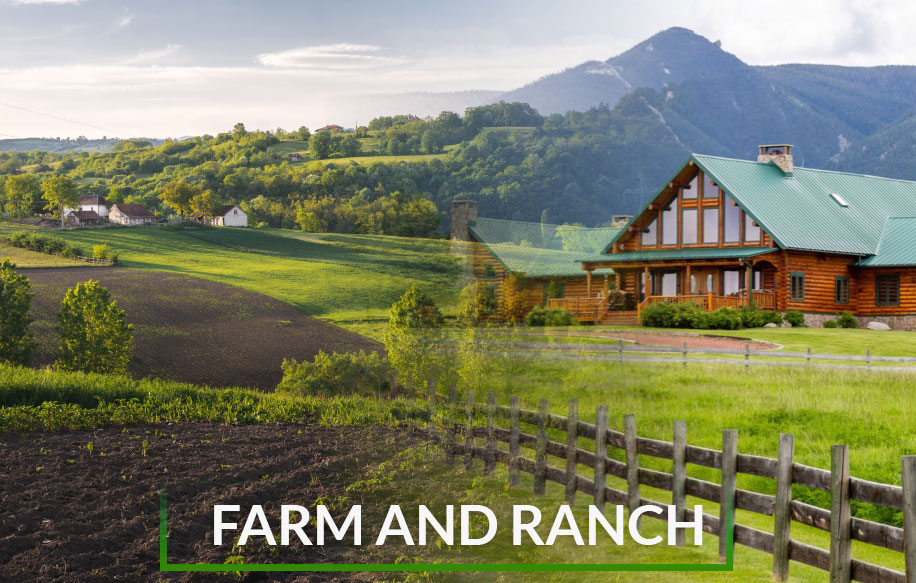Ranch vs Farm are terms that are often used interchangeably. Even though both of them are vast lands used by farmers or ranchers, there are still specific differences that put them apart! It is essential to know the difference between the two before you make an investment in any of these.
You must have come across the phrase “all ranches are farms, but not all farms are ranches”. So to understand this difference, let us first understand what farm and ranch are!
Table of Contents
What is Farm?
A Farmland is a large plot of land that focuses on agriculture, like dairy or crops. Farms are known for producing various things, from food and fuel to raw materials like cotton. A farm can be categorized as follows by the types of different crops that are grown on it:
- Dairy farms
- Hog farms
- Poultry farms
- Cotton farms
Farmers have to focus on the soil of their land to ensure it is optimal for growing their crops and maximize the space to get the most out of their land. Some of the most common types of farms include:
- Commercial
- Livestock
- Poultry
- Dairy
- Horse
- Crops
Farms are smaller than ranches and are a place to grow crops, raise livestock, and collect resources produced from the crop or livestock. Primarily the tasks on farms include:
- Tending to the land
- Maintaining the soil
- Keeping the specific livestock alive
What is a Ranch?
A ranch is a piece of property used to raise livestock such as sheep, cattle, and goats. The central focus of the rancher is maintaining land that meets the grazing needs of their livestock animals while caring for animals.
A rancher’s responsibilities include:
- Managing and breeding livestock
- Selling the livestock in the market
- Soil management
- Rainwater collection
Moreover, western ranches are a combination of privately-owned land mixed with open range pasture land and grazing land leased to the state, Bureau of Land Management, or the U.S. Forest Service. The ranchers and ranch operators are also called cowboys, wranglers, and cattlemen.
What are the types of ranches?
- Guest ranch
- Dude ranch
- Working ranch
- Game ranch
Ranch vs Farm : Difference between Ranch and Farm?
| Ranch | Farm |
| Ranches are used to raise livestock such as cattle, goats, sheep, and pigs. | Farms are used for agricultural purposes such as growing crops and livestock for dairy products. |
| Ranches are used for producing meat | Farms are used for producing crops such as corn, wheat, soybeans, cotton, and rice |
| Ranchers refer to their land as pasture, or rangeland | Farmers refer to their land as fields |
| Ranchers are only concerned with meat/beef, and raising livestock animals. | Farmers are concerned with harvesting dairy products other than crops |
Should you invest in land or a ranch?
Investing in land is a crucial decision, as they want good returns on investment. Owning farmland is typically more expensive by acre than ranchland but is undoubtedly more profitable as one likely needs to buy more land for a ranch if one wants profit.
Another factor that needs to be considered before investing in land is what type of land would align with their requirements and match their goals while keeping the above-listed differences between farms and ranchers in mind.
Where to find the best land from?
Don’t invest your hard-earned money in a land that isn’t well researched.
At Landsale4u, our team conducts an in-depth analysis of the property and shares all the critical information with you before finalizing the property. From zoning restrictions to soil quality, everything is mentioned with the best price of the property on our website.
With our experience and passion for raw or vacant lands, we have been helping our clients find their ideal lands for quite a few years. Want to get help in deciding which is the right land for you? Contact us at https://landsale4u.com/
Surender Sharma
Land record is a generic term which is used to refer to a number of records. These include Records of Rights (RoRs), register of the lands, crop inspection register, tenancy, mutation register, disputed case register, and so on. Land record also includes certain geological information in regard to the land such as the shape and size of the land, type of soil on the land. It can also include the economic information in relation to the irrigation and crops.

